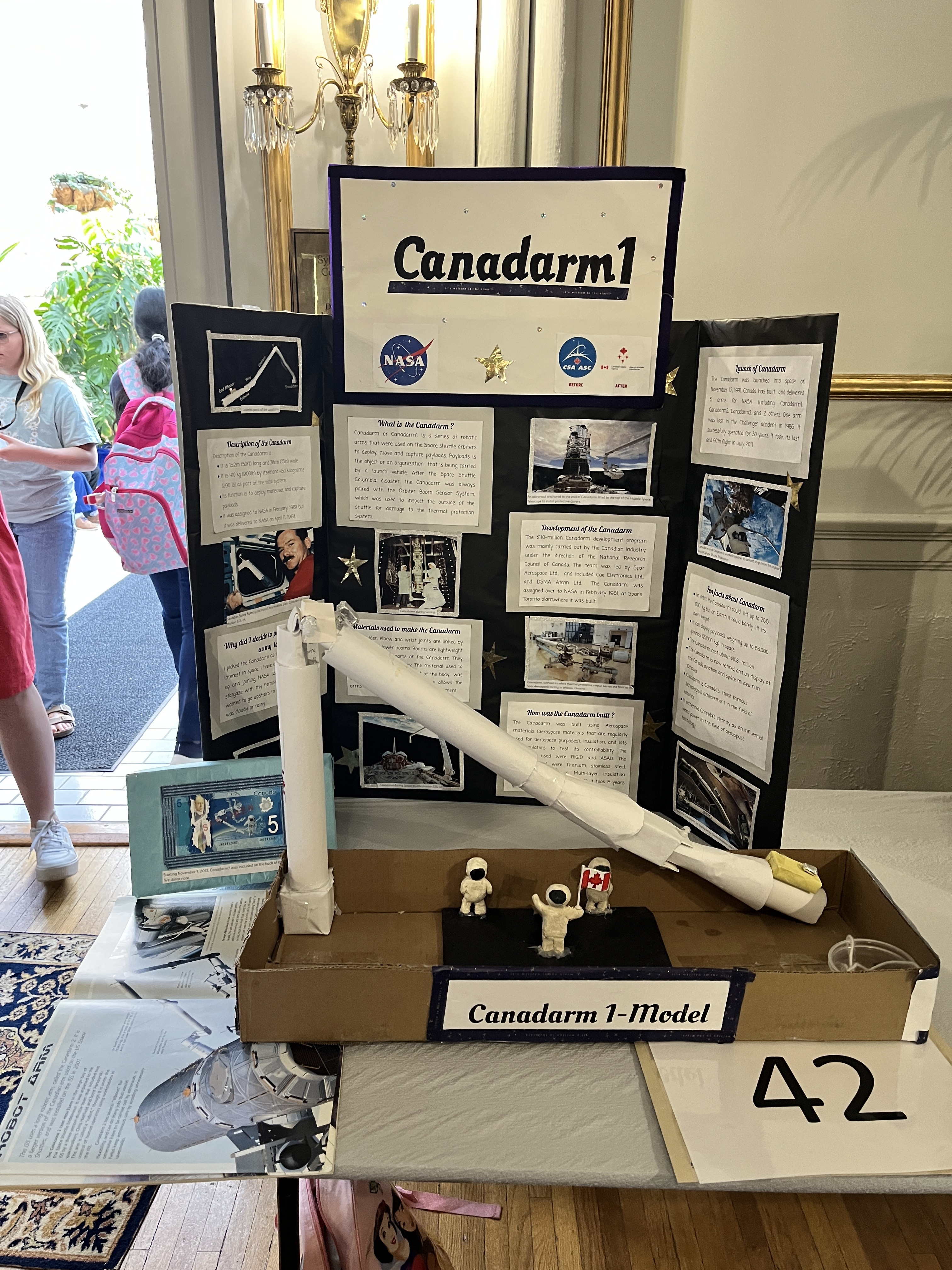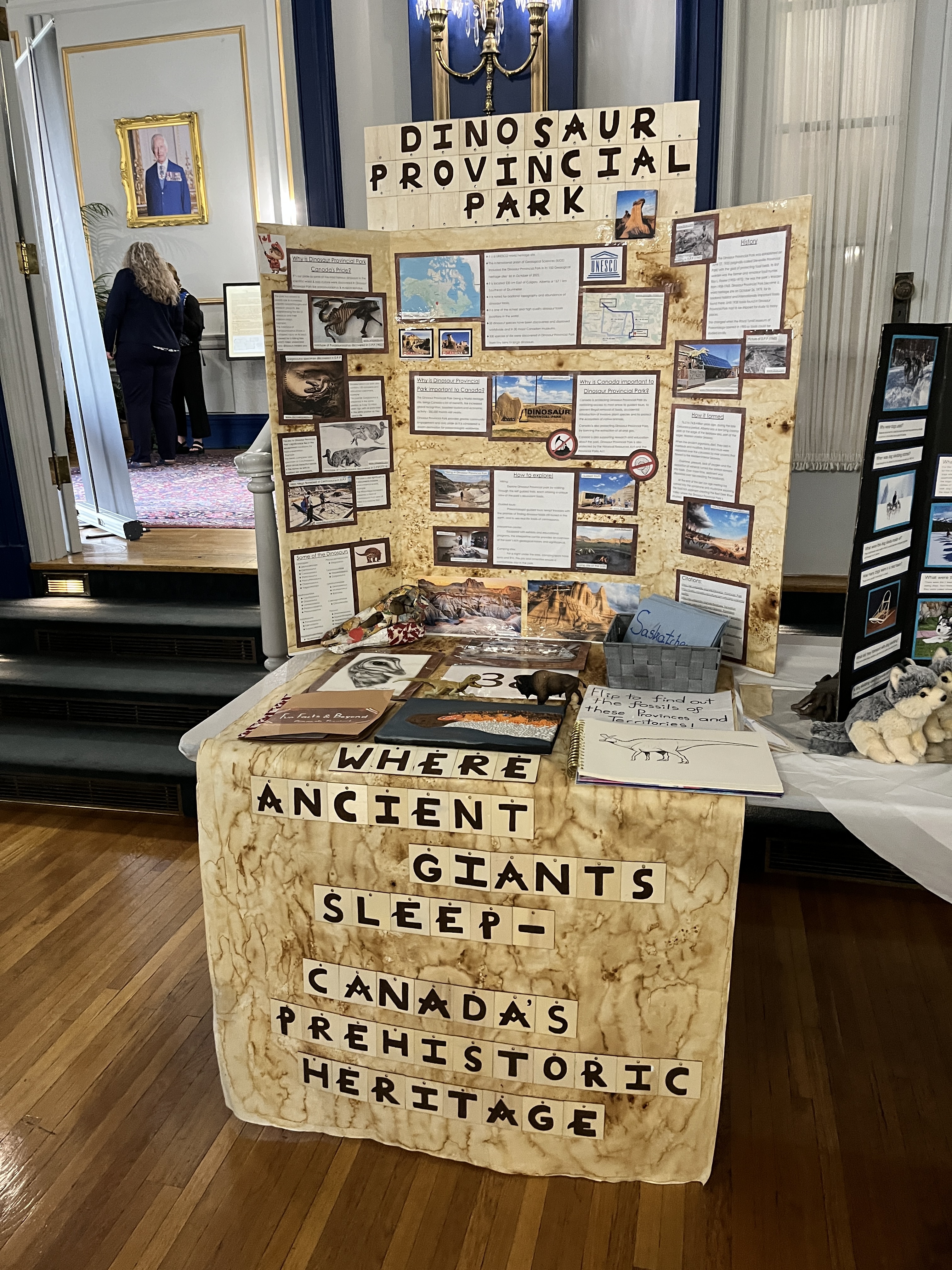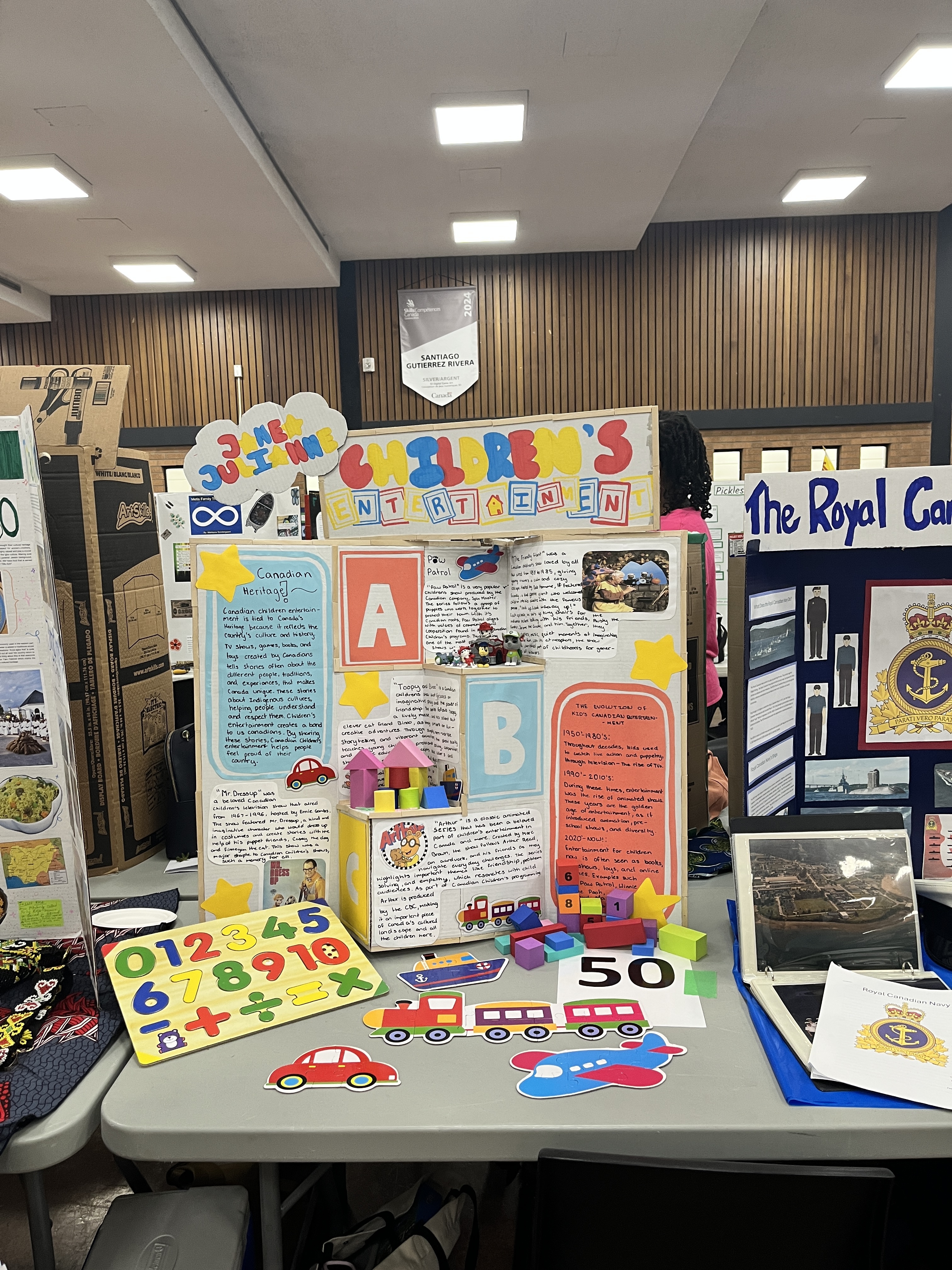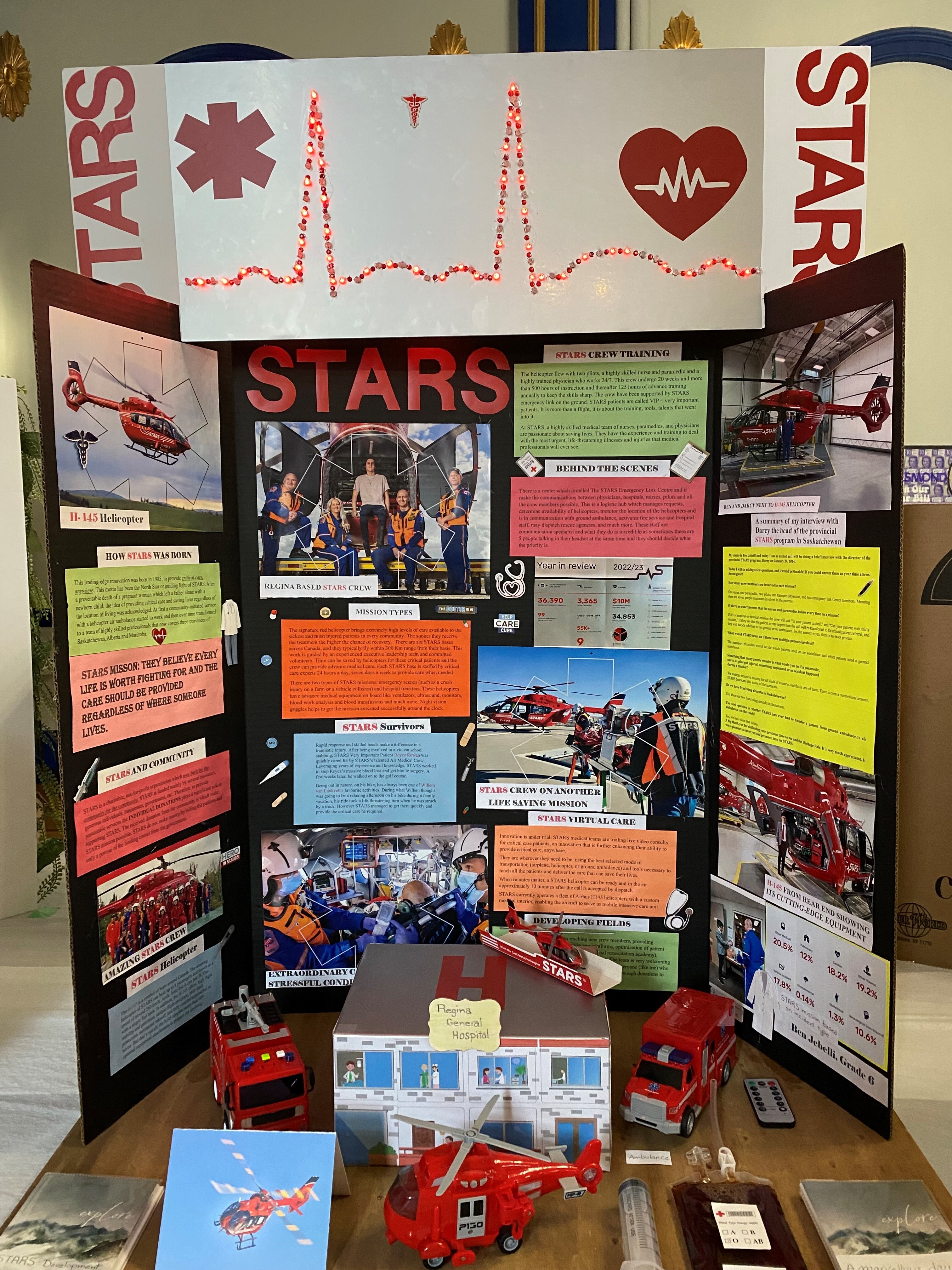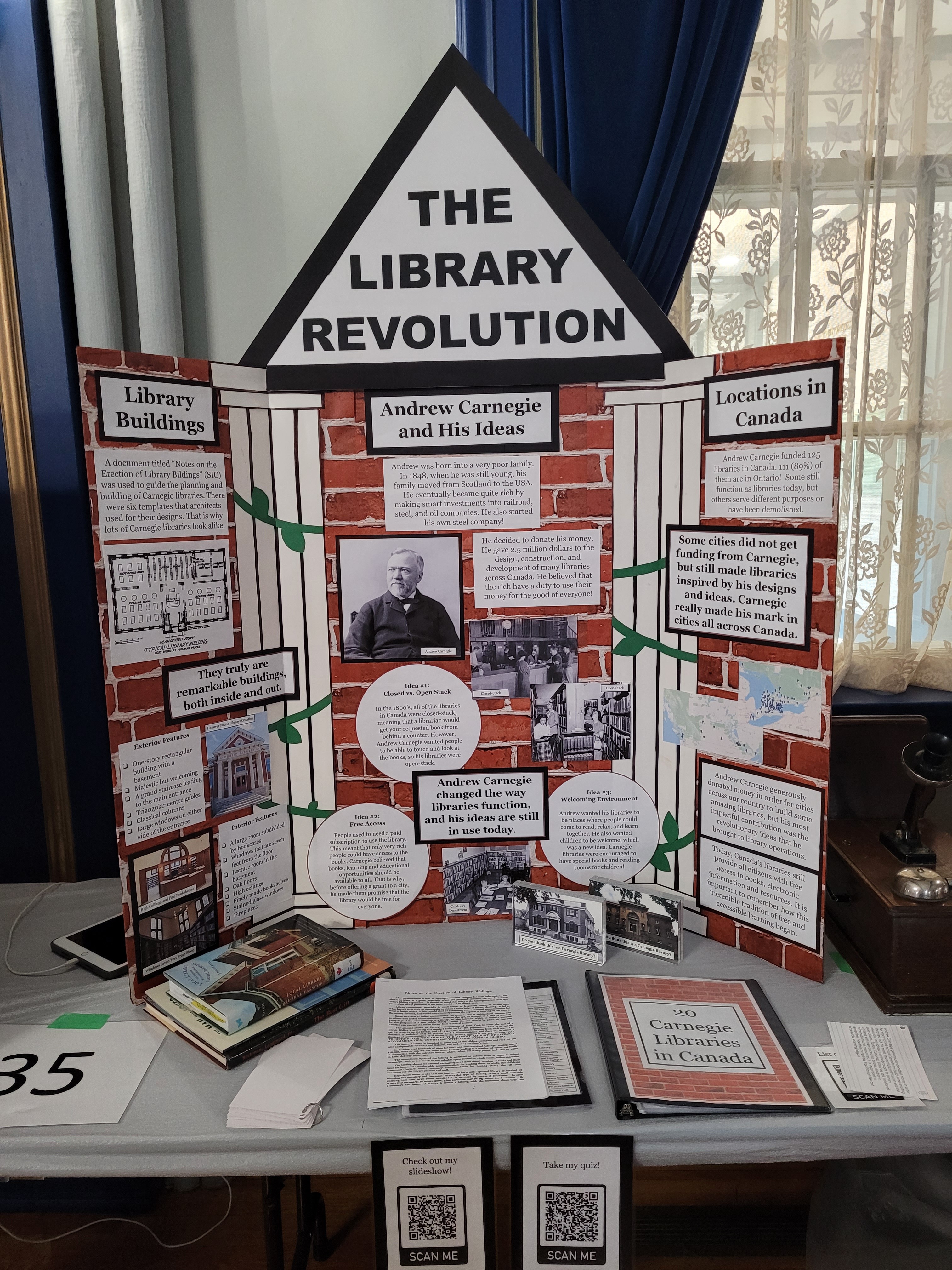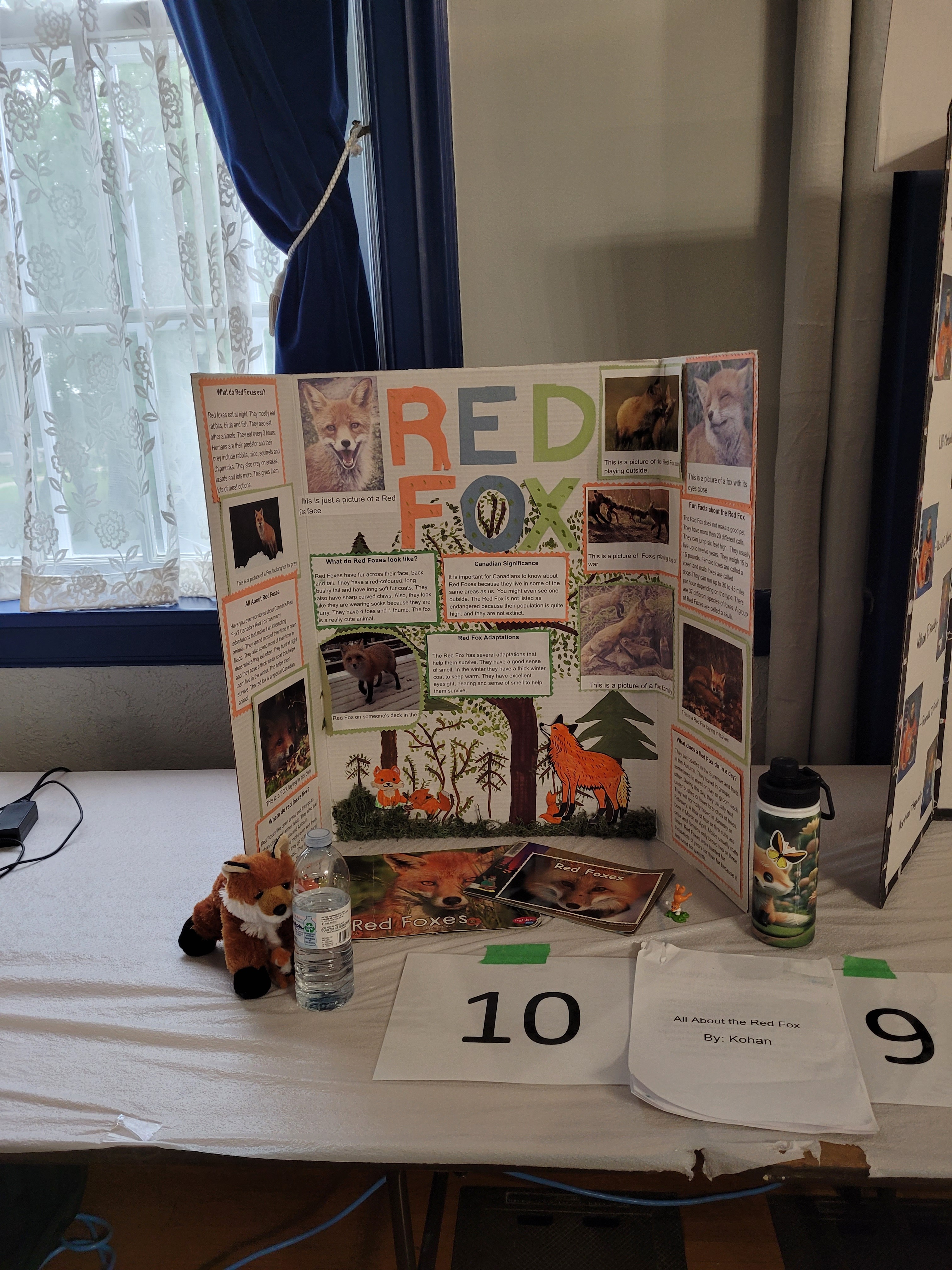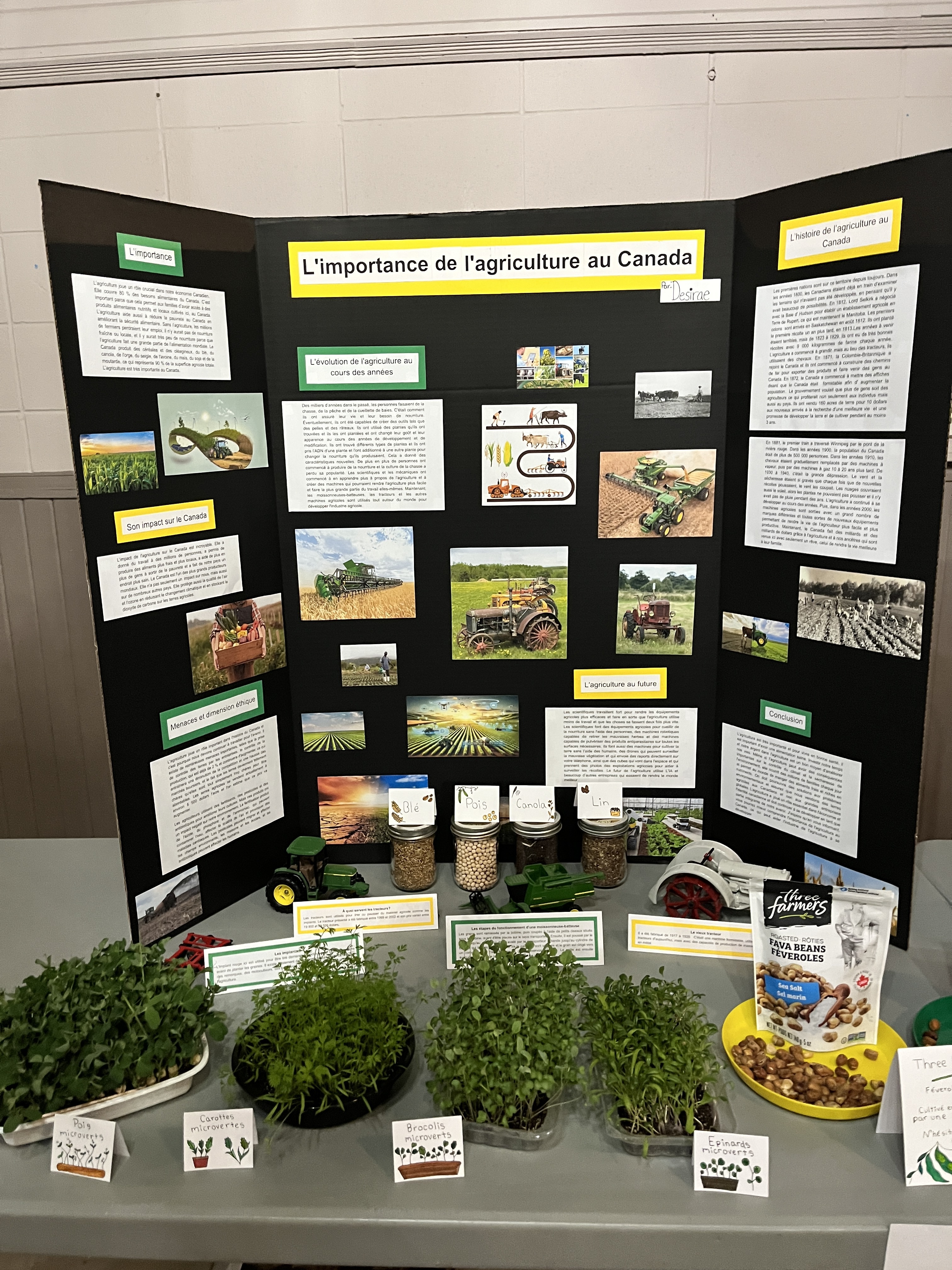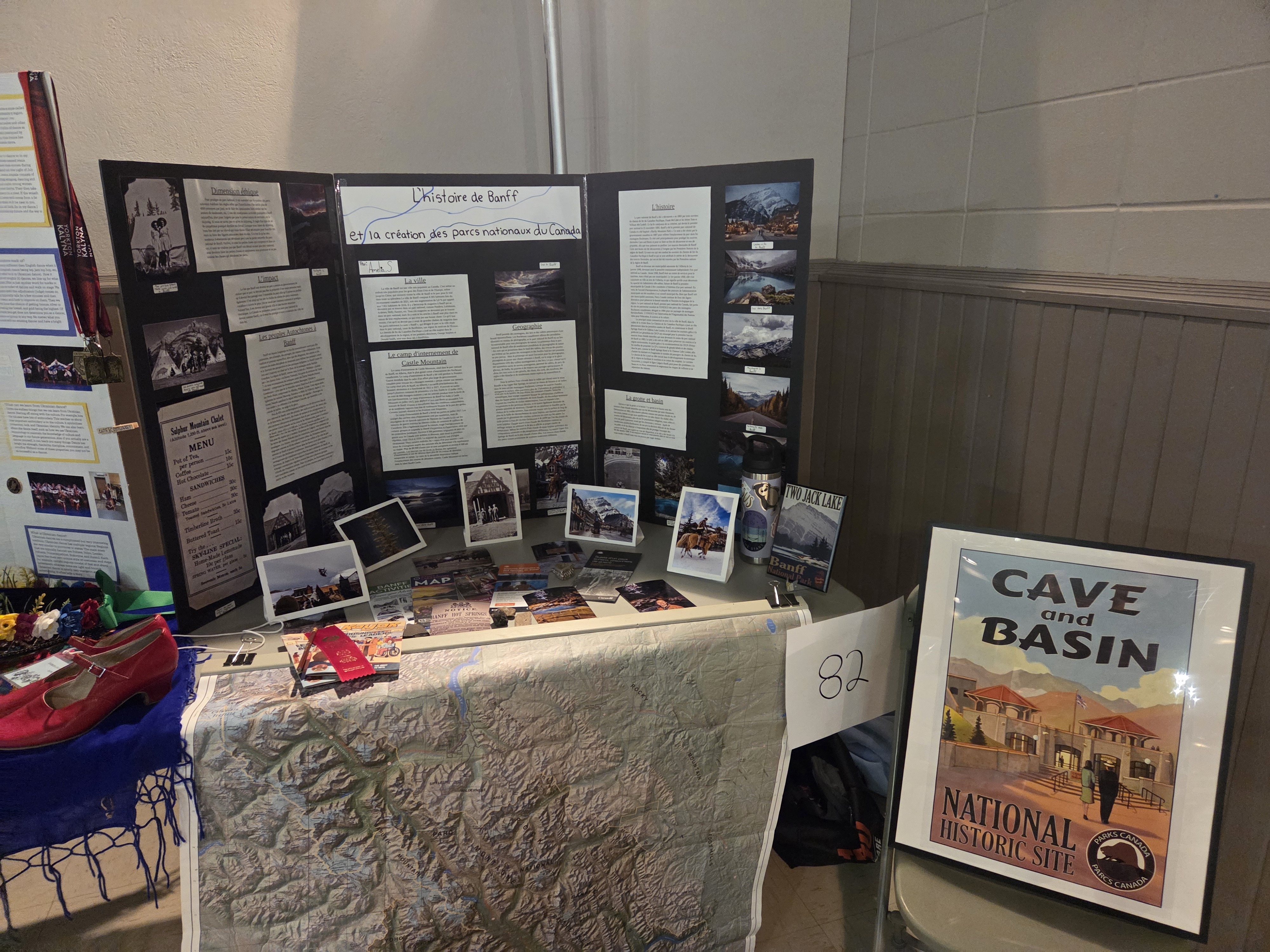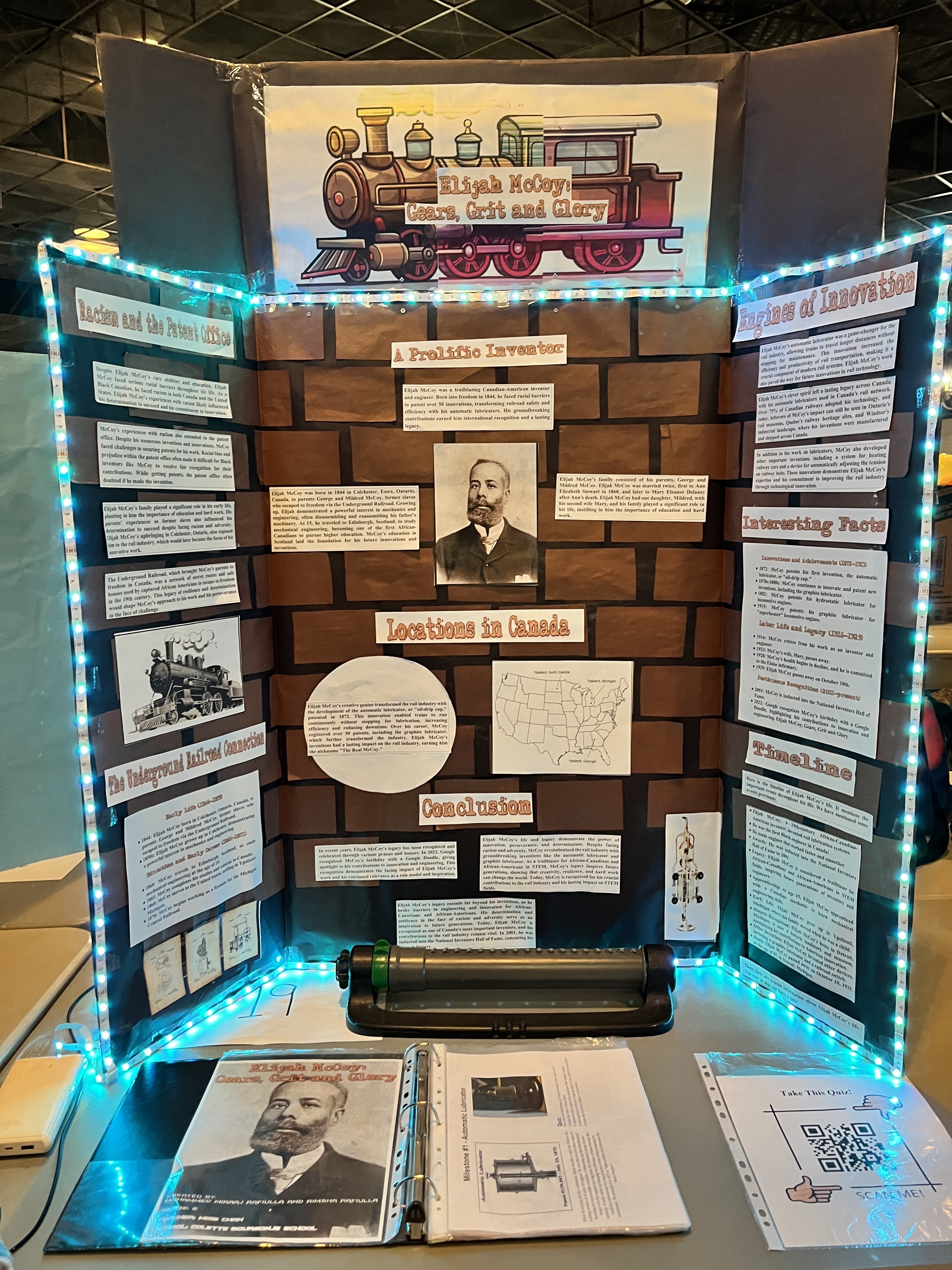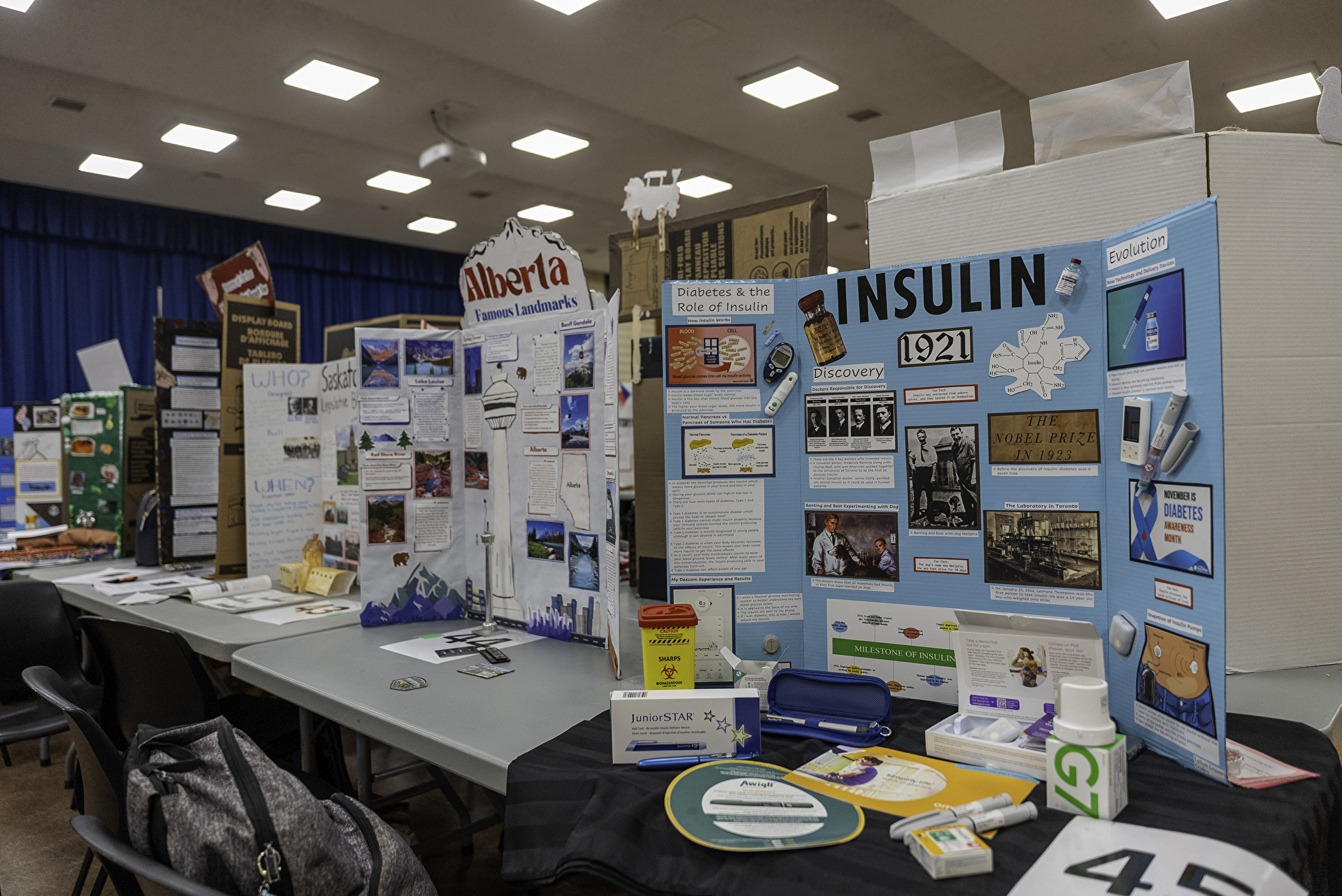
Heritage Fair Project Guidelines
Project Guidelines
- Students in grades 4 through 8 are eligible to participate at the regional and provincial levels.
- The topic must be related to Canadian heritage.
- The project must have a visual component (video, backboard, etc.).
- Include the student's name somewhere in the project display.
- The student must have an oral presentation as part of their project to present to the judges.
- Teachers should verify the historical accuracy of projects, particularly those selected for the Regional Heritage Fairs.
- All submissions must be student-produced, although teachers or other adults may advise and assist students with their projects. Family members can assist in the production of models, etc., as long as the student is the primary builder.
- Students may prepare projects as individuals or in partners. If selected for a Regional or Provincial Heritage Fair, both partners should participate.
- Groups of more than two students are not eligible, although groups may research a topic together and present separate projects. In such a case, students would work together but then be in competition with one another.
- Students must use ethical and responsible practices when researching and using information. Photographs must be properly credited. Any person or organization providing information included in a project, as well as electronic and print sources, must be acknowledged by students in a Works Cited page.
- Have the resources used (References or Works Cited page) for the project displayed somewhere in the project display.
- Student are encouraged to use their own means of cultural expression to prepare and communicate stories about Canadian history (i.e. create or interpret a character; write a sketch, poem, or song; create a short film), keeping in mind the time limit for presentation.
- Students may submit their project in either French or English (or both). If a student would like to use another language, this must be determined at the time of registration so that judges can be found for the respective Regional Heritage Fair. Vocabulary in any language can be included in a project.
- Projects must be suitable for table top display and their dimensions should not exceed a width of 4 feet (48 inches). At each level of the Heritage Fairs program, each project is allotted 4 feet of table space. Each space is also approximately three feet (36 inches) deep. Students may also use the space in front of their table, however, they and judges also need to be able to stand or sit comfortably within this space.
- Height of a project is up to the student, but all projects and props must be free-standing, as wall access is not guaranteed.
- Students selected for the Provincial Heritage Fair are encouraged to expand upon their projects. Some expansion suggestions include: embellish the display with further props and decorations; expand on props/models, conduct further research, incorporate photos or video from the school or Regional Fair into the display. If there are updates in current events pertaining to the topic, students are encouraged to add these into their presentation.
Sensitive Topics
- All projects must be presented in a respectful manner. Projects must not include profane or obscene material. Material meant purely to offend will not be tolerated.
- Projects must avoid racist and sexist material. We understand that many historical topics include issues that we would find offensive, racist, or sexist today. Obviously, it is recommended that students address these issues and study these topics! (i.e. residential schools, women's voting rights, the Battle of Batoche, internment camps, etc.) What students should avoid are the following: images and posters with caricatures/cartoons that depict women or any ethnic group negatively; offensive slogans that can be easily seen; and racial slurs (even presented in historical context). Students may use blank spaces or inoffensive symbols to depict offending words. The Regional Heritage Fair Committees and Heritage Saskatchewan reserve the right to cover any of the above so that while a student may use them in their presentation, the images or words would not be visible to the general public.
*Heritage Saskatchewan and the Regional Heritage Fair Committees are not responsible for the loss, theft or damage of projects or items associated with the projects.
Step-by-Step Project Guide
Use the guide below to guide to help you create your Heritage Fair project!
Step 1: Choose your topic
- Think about what interests you. What topics related to Canadian heritage are you interested in?
- Think about the area, town and province you live in - are there any local topics that interest you?
- Take a look at topic ideas on the Heritage Fairs website.
- Are there lots of resources available to back up your topic? Not having enough research resources will make building your project difficult.
- Is it important to our heritage as Canadians? This can be as broad as the whole country or as local as your province, your community or your family.
Step 2: Research
- Find out what you want to know about the topic and form a research question to help narrow down your topic.
- Look at the list of resources available on the Heritage Fairs website. Some are online and some you will have to go to your school or local library to take out.
- Do your own research online or at the library. Take a look at our presentation, "How to Do Research."
- Make sure you find both primary and secondary sources for your project. To learn more about what primary and secondary resources are and how to identify them, take a look at our presentation, "Primary, Secondary, and Tertiary Sources."
- Make sure to keep track of the sources you use for your project and compile them on a Works Cited or References page. To learn how to make a Works Cited or References page, use our worksheet to guide you.
Step 3: Compile the Information
- Compile the information you gathered and write it in your own words. It is easiest to compile your information into a report with an introduction, body paragraph(s), and conclusion. Your teacher will likely have more specific guidelines and requirements for this portion of your project.
- The content of this report will make up the written portion of your backboard and the script for your oral presentation.
Step 4: Create the Visual Component
- Now that you have your project researched and compiled into a written report, it is time to create your visual display using a backboard (in-person regional and provincial fairs) or video/powerpoint (if doing a Virtual Heritage Fair project).
- Make sure to organize the written content and photos on your board in a way that is easy for judges and visitors to read your display.
- Make a plan for transporting your backboard to the school, and to the regional and provincial fairs. For transportation tips, dowload our transportation tip sheet.
- For more tips on your project displays, download our design tip sheet.
Step 5: Get Ready to Present
- Make sure your practice your oral presentation as many times as you need to ensure you are ready to present to the judges and to visitors.
- Have cue cards or a print version of your script to guide you through your presentation and keep you on track and on time.
- Think about the types of questions the judges or public viewers may ask you so you can prepare your answers ahead of time.
- Make sure you speak slow enough and clear enough. Sometimes our nerves make us want to speak quickly. It is okay for you to pause, take a deep breath, and calm yourself if you need to.
- For more presentation tips, dowload our presentation tip sheet..
- Most importantly - make sure to have fun!
